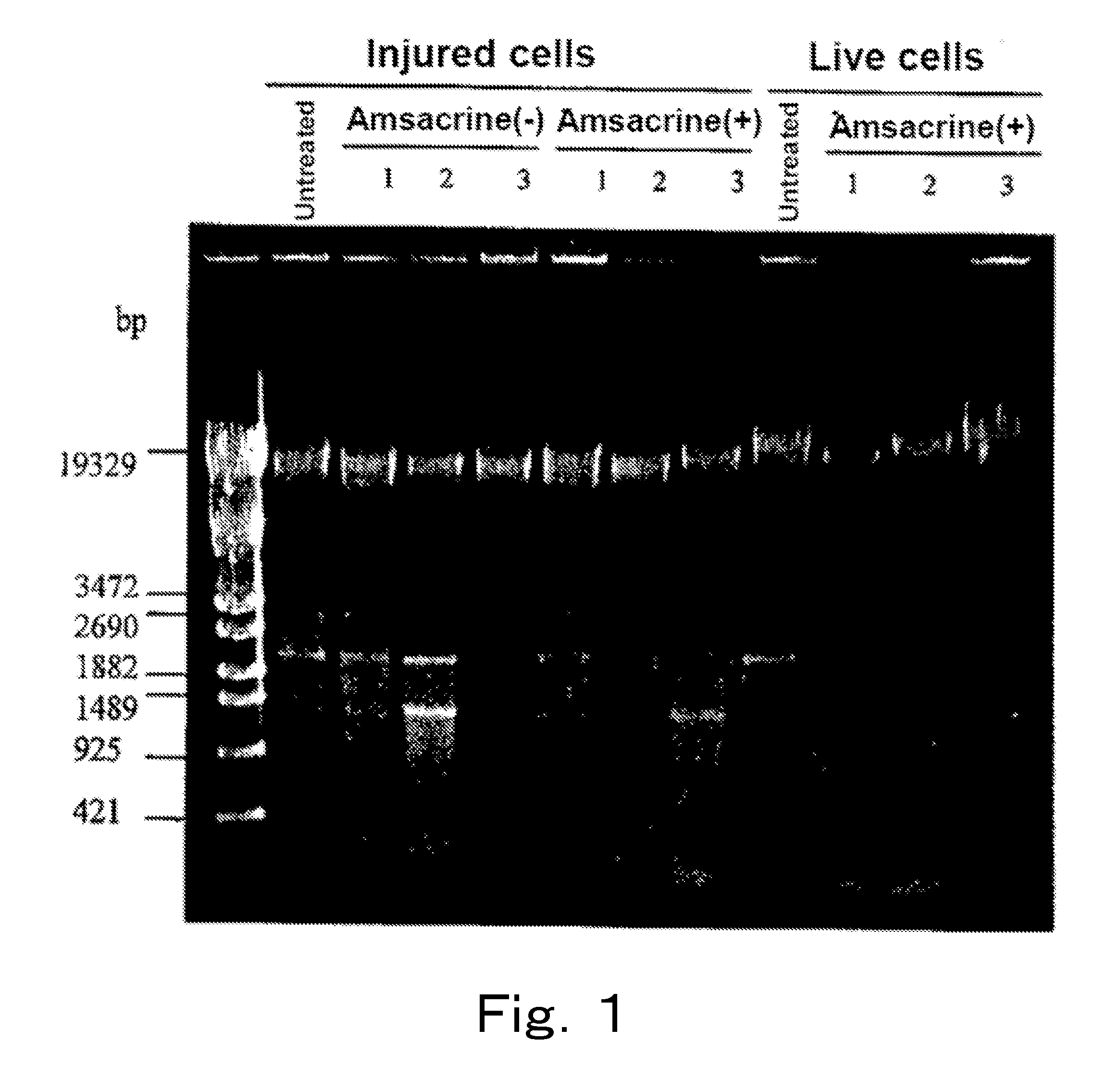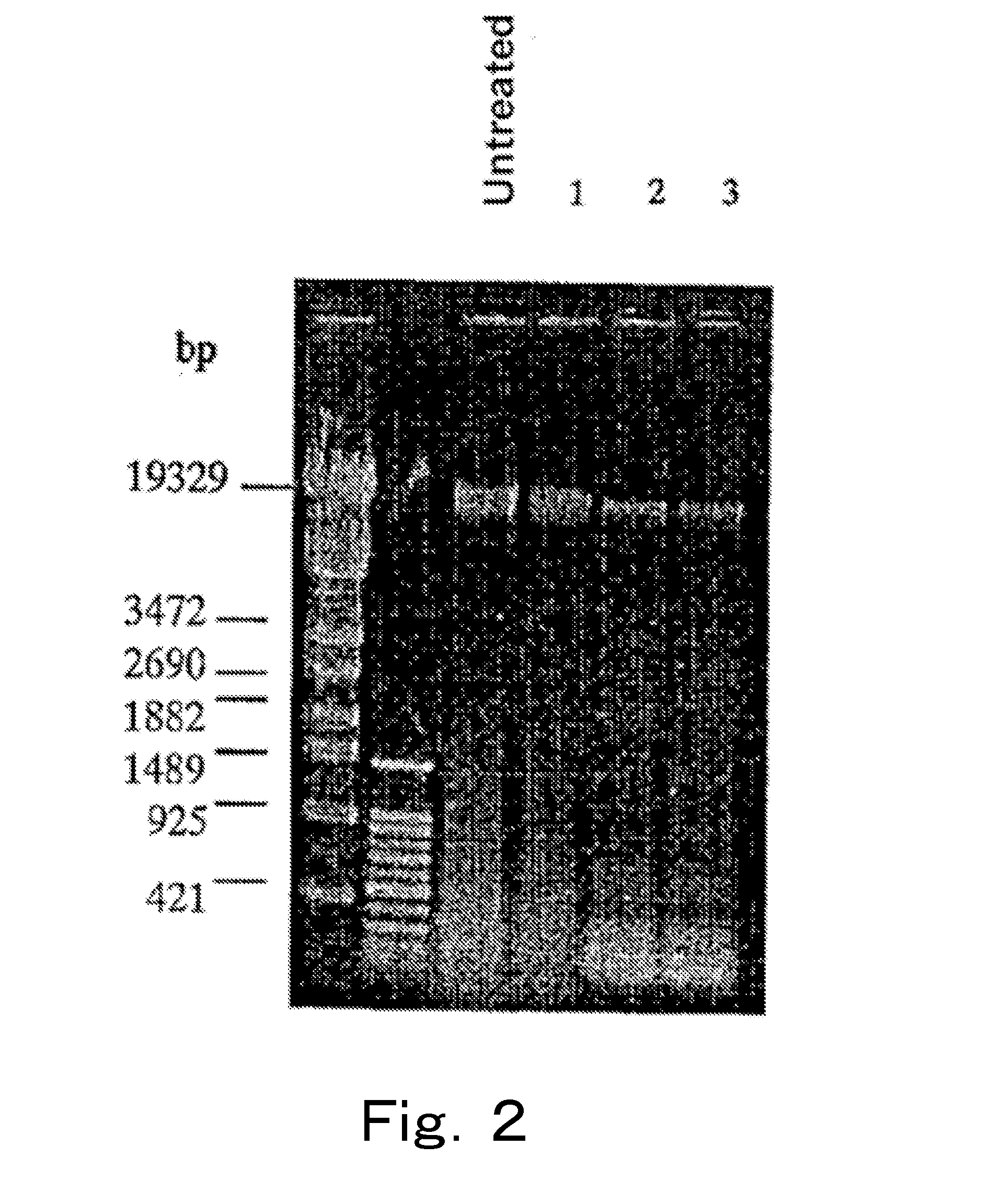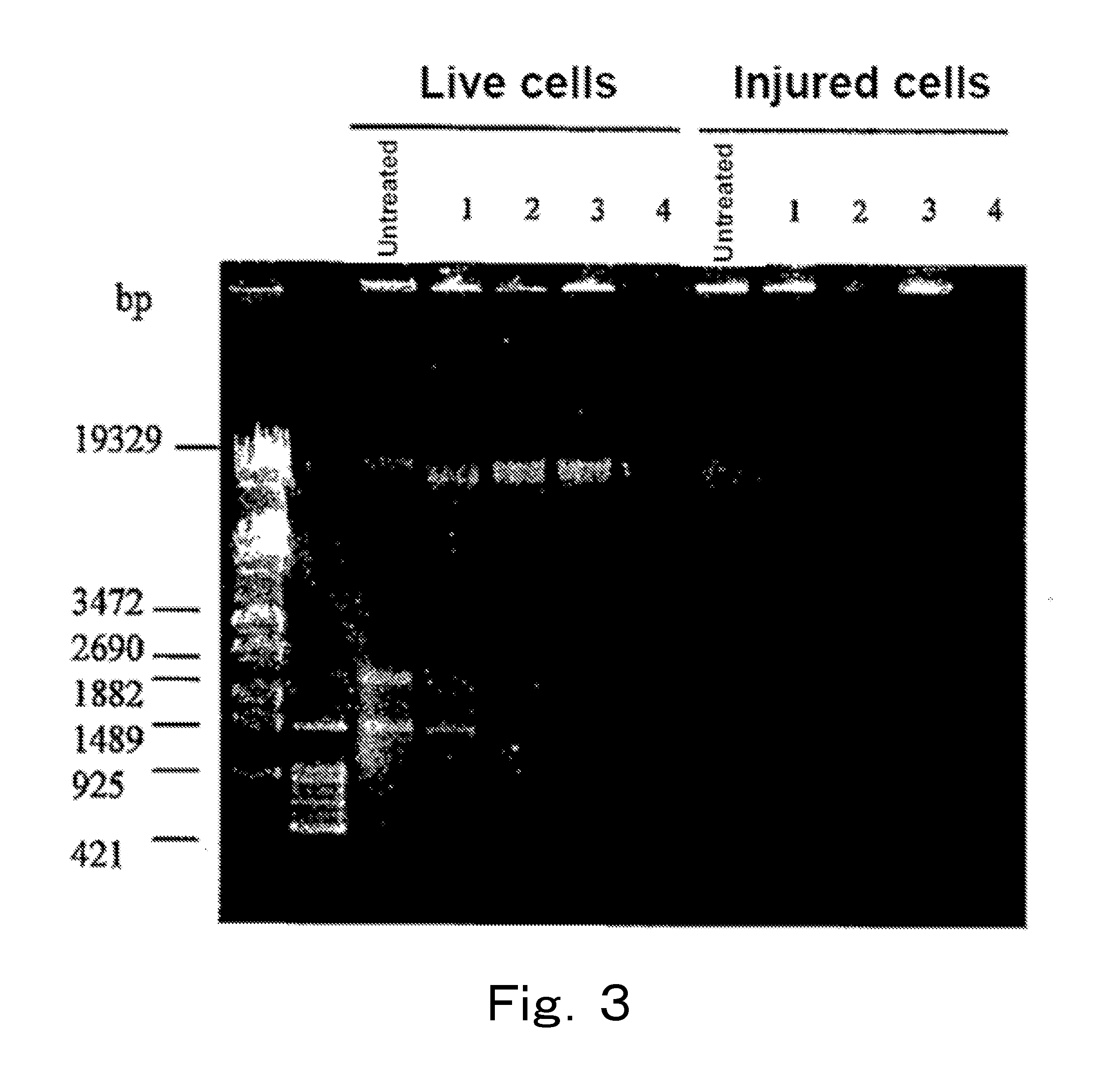Method for detection of microorganism and kit for detection of microorganism
a microorganism and kit technology, applied in the field of microorganism detection and kit for microorganism detection, can solve the problems of foodtuffs actually subjected to pasteurization treatment, methods that cannot be said to be sufficient as methods for distinguishing live and dead states, and methods that require about two days to obtain, etc., to achieve high detection sensitivity
- Summary
- Abstract
- Description
- Claims
- Application Information
AI Technical Summary
Benefits of technology
Problems solved by technology
Method used
Image
Examples
example 1
[0103]Live cells and injured cells of a microorganism were treated with a topoisomerase poison, respectively, and cleavage degree of each chromosomal DNA was examined.
1. Preparation of Samples
1-1) Preparation of Live Cell and Injured Cell Suspensions
[0104]Listeria monocytogenes (Listeria monocytogenes JCM 2873, henceforth also referred to as “Listeria”), which is a gram-positive bacterium, was cultured at 30° C. by using the BHI broth, 40 ml of the culture medium in which the cells were at the logarithmic phase was subjected to refrigerated centrifugation at 4° C. and 8,000×g for 15 minutes, and the supernatant was removed. 40 ml of physiological saline was added to the cells, and the mixture was sufficiently stirred, and subjected to similar refrigerated centrifugation, the supernatant was removed, and then 10 ml of physiological saline was added to the cells to prepare a live cell suspension. When live cell count of this live cell suspension was measured on a standard agar plate m...
example 2
[0117]Analysis was performed by PCR targeting the 23S rRNA gene using chromosomal DNAs of live cells and injured cells of microorganisms treated with a DNA gyrase poison.
1. Preparation of Samples
1-1) Preparation of Live Cell and Injured Cell Suspensions
[0118]Enterobacter sakazakii (Enterobacter sakazakii ATCC 51329 strain, henceforth also referred to as “Enterobacter”), which is a gram-negative bacterium, was cultured at 37° C. by using the BHI broth, 40 ml of the culture medium in which the cells were at the logarithmic phase was subjected to refrigerated centrifugation at 4° C. and 8,000×g for 15 minutes, and the supernatant was removed. 40 ml of physiological saline was added to the cells, and the mixture was sufficiently stirred, and subjected to similar refrigerated centrifugation, the supernatant was removed, and then 10 ml of physiological saline was added to the cells to prepare a live cell suspension. When live cell count of this live cell suspension was measured on a stand...
example 3
[0153]Analysis was performed by PCR targeting the 16S rRNA gene or the 23S rRNA gene using chromosomal DNAs of live cells and injured cells of microorganisms treated with EMA.
1. Preparation of Samples
1-1) Preparation of Gram-Negative Bacterium (Live Cell and Injured Cell) Suspensions
[0154]Escherichia coli DH5α (henceforth also referred to as “Escherichia coli”), Citrobacter koseri (Citrobacter koseri JCM 1658, henceforth also referred to as “Citrobacter”), Salmonella enteritidis (Salmonella enteritidis IID 604, henceforth also referred to as “Salmonella”), and Klebsiella oxytoca (Klebsiella oxytoca JCM 1665, henceforth also referred to as “Klebsiella”) were each cultured at 37° C. by using the BHI broth, 40 ml of the culture medium in which the cells were at the logarithmic phase was subjected to refrigerated centrifugation at 4° C. and 8,000×g for 15 minutes, and the supernatant was removed. Then, 40 ml of physiological saline was added to the cells, and the mixture was sufficientl...
PUM
| Property | Measurement | Unit |
|---|---|---|
| time | aaaaa | aaaaa |
| temperature | aaaaa | aaaaa |
| temperature | aaaaa | aaaaa |
Abstract
Description
Claims
Application Information
 Login to View More
Login to View More - Generate Ideas
- Intellectual Property
- Life Sciences
- Materials
- Tech Scout
- Unparalleled Data Quality
- Higher Quality Content
- 60% Fewer Hallucinations
Browse by: Latest US Patents, China's latest patents, Technical Efficacy Thesaurus, Application Domain, Technology Topic, Popular Technical Reports.
© 2025 PatSnap. All rights reserved.Legal|Privacy policy|Modern Slavery Act Transparency Statement|Sitemap|About US| Contact US: help@patsnap.com



